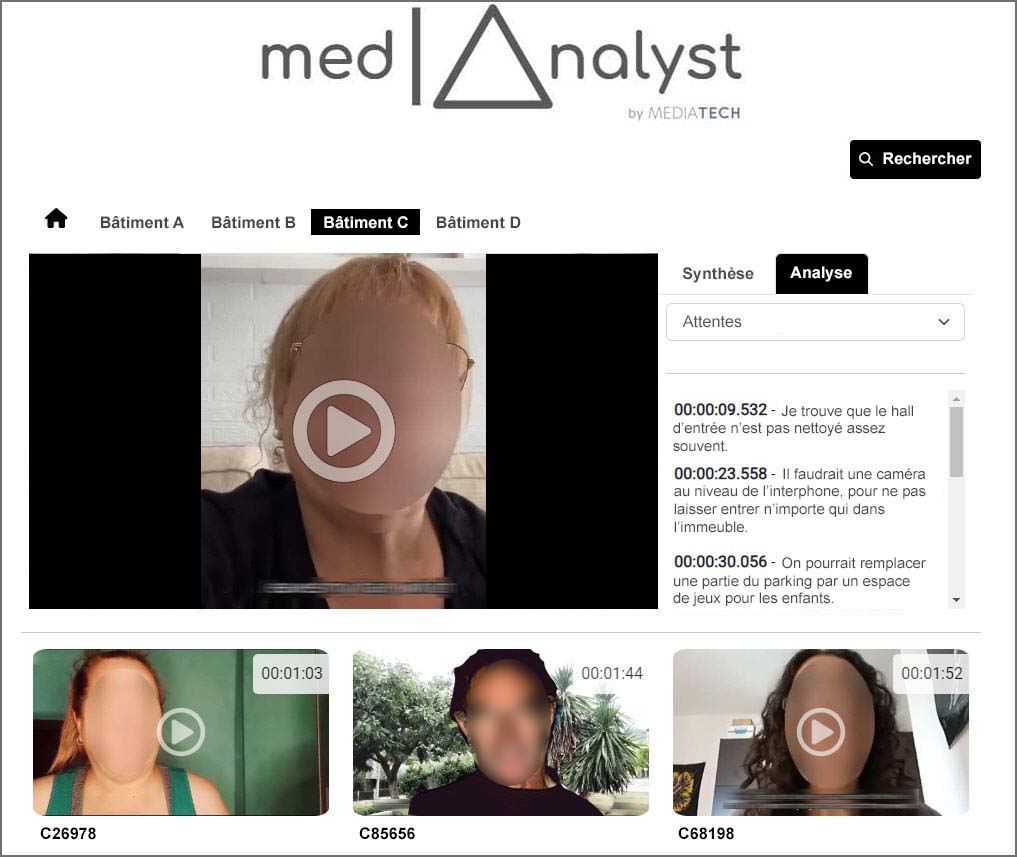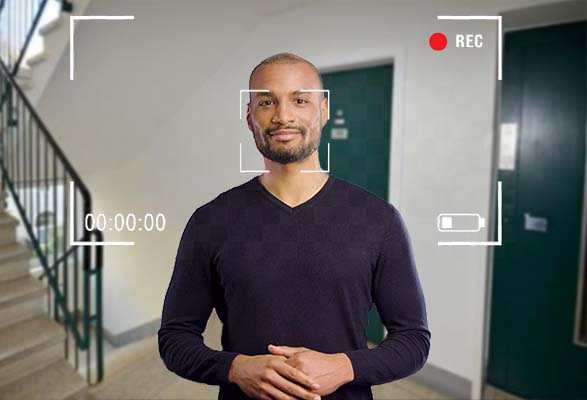With MedIAnalyst, you can deeply analyze audio or video testimonies collected via a voicemail, video box, webpage, or app. Simply send a link, share it on your networks, or display a QR code to collect messages from your audience. These messages can be automatically analyzed to provide summaries and verbatim excerpts without delay and at a lower cost.
MedIAnalyst can provide directly actionable insights or help narrow the focus of a more in-depth study, saving you time, enhancing relevance, and optimizing your budget.
Examples of Studies Where MedIAnalyst Could Help:
- Evaluating the reception and impact of an awareness campaign.
- Understanding barriers and motivations for vaccination in a public campaign.
- Analyzing citizens’ understanding and adherence to recycling communication messages.
- Gauging how residents and businesses perceive a community and its initiatives.
- Assessing the effectiveness of newsletters and social media in disseminating information from a local government.
- Identifying specific needs of neighborhood residents.
- Understanding travel habits and obstacles to using public transport.
- Evaluating residents’ perceptions of air quality and their sensitivity to environmental issues.
- Collecting citizen feedback on an urban development project.
- Analyzing household dietary behaviors to guide public health policies.
MedIAnalyst can support citizen consultations or participatory democracy initiatives.

MedIAnalyst by Mediatech:
- Nearly 30 years of expertise in media study methodologies and video.
- Mastery of workflow automation and specialized AI models.
- A culture of transparency with result interfaces that make it easy to locate sequences illustrating the analyses.
The Concept in 5 Steps:
A MedIAnalyst study typically involves five steps:
- Collection and processing of audio or video sources.
- Transcription.
- Validation.
- Analysis.
- Interactive presentation.
… with human oversight at every stage of AI use.
Audio or video elements can be collected via a mobile app, drag-and-drop on a webpage, or sent to instant messaging, etc. Initial processing may include actions like blurring respondents’ faces. Transcription can be done in any language, with automatic translation. Subtitles in the chosen language can be embedded in the video or selected in the player. A customized dictionary of proper names, brands, or acronyms can be used for transcription. The media and their metadata, resulting from AI analysis, are organized in a “StreamTV” that allows direct access to verbatims, linking content by keywords or concepts.
Here’s an example from a survey of local residents:

Seeing and Hearing the Evidence Behind Study Conclusions
For decision-makers, it is particularly important to see and hear the statements that support the conclusions of a study. Through a webTV platform, they can easily access this content, or it’s possible to create a montage of the most significant excerpts.
Streamlike is particularly conscious of the environmental impact of AI and video, and it advocates for responsible AI use just as it does for responsible streaming. Both have considerable energy consumption and should be used wisely.
For a Needs Assessment, Contact Us
For further exploration, visit our blog.
